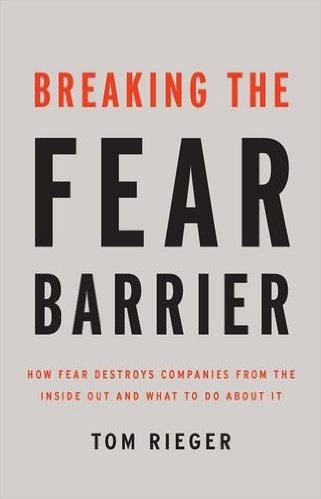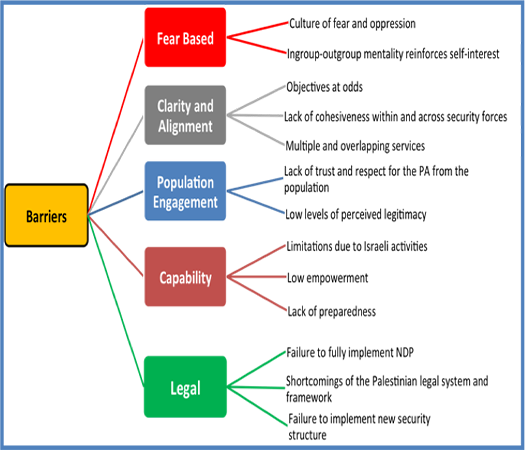BARRIER ANALYSIS APPLICATIONS
NSI has used barrier analysis in support of numerous client initiatives to identify and prevent “fear” barriers from paralyzing and stymieing organizations.

Breaking The Fear Barrier
NSI’s President Tom Rieger–author of the recent book “Breaking the Fear Barrier: How Fear Destroys Companies from the Inside Out, and What to Do About It”–is a nationally-recognized authority in identifying and removing organizational barriers to success. According to Tom Rieger, “Fear destroys companies. More specifically, fear leads companies to destroy themselves.” While the specifics vary as widely as corporate cultures, the symptoms are depressingly common: “…bureaucracy, inefficiency, low morale and, ultimately, failure.” Rieger’s Breaking the Fear Barrier grew out of his research which includes seven years of “Barrier Analysis” as a Gallup consultant as well as almost 50 other sources cited in his book—probably a record given the prevailing standards of business literature. In the book, Rieger exposes the truths instinctively understood by everyone but seldom admitted in polite company. In his calculus, “fear of loss” and an “endemic sense of entitlement” are the root causes of dog-eat-dog competition and bureaucratic in-fighting for everything from pay and promotion to budgets and big offices. While fear underlies everything, parochialism, territorial conquest, and empire-building are the sedimentary bedrock of every bureaucratic structure. Rieger also sketches out a 12-step program to set them free, with “rules audits” and decentralized decision-making helping to offset empire-building and short-term thinking. For a copy of the book, see: Breaking The Fear Barrier

Challenges to Palestinian Internal Security
What are the critical areas of security sector reform required to make civil society work within the Palestinian Authority and across the territories versus the status quo?
To identify Palestinian security sector reform measures that would assist in fostering a healthy and transparent relationship between the Palestinian security sector and Palestinian civil society in the West Bank, NSI utilized a two stage analytic method. Our approach culminated with a barrier analysis to facilitate the identification of impediments, or barriers, to the provision of security by the Palestinian security sector consistent with acceptable practices of modern security forces and in alignment with civil societies expectations. The methodology enabled identifying security sector reform measures that can both strengthen and solidify the Palestinian security sector in a manner that is popularly accepted and sustainable with the Palestinian civil society. The analysis identified several areas of security sector reform measures and development: clarify confusion over roles and responsibilities of the Palestinian security sector, strengthen legitimacy of the security forces in the eyes of Palestinian civil society and the population, and improve equipping and training of the security forces.

Human Resources and Development
The Human Resources and Development office within a large government agency faced barriers in effectively serving the needs of the workforce. Their organizational structure was misaligned with their mission of shaping, supporting, and serving the needs of employees, managers and leaders. Through an in-depth review of current policies, practices and procedures, an assessment of the information and policy needs of different constituencies, and a deep assessment of barriers within the Human Resources office, a new organizational alignment was proposed, that restructured roles, budgets and responsibilities based on customer needs, rather than parochial processes.
The new structure provided more consistent and centralized access to information, added accountability aligned with mission objectives, and integrated workforce planning and education to support a more mission-oriented workforce of the future.